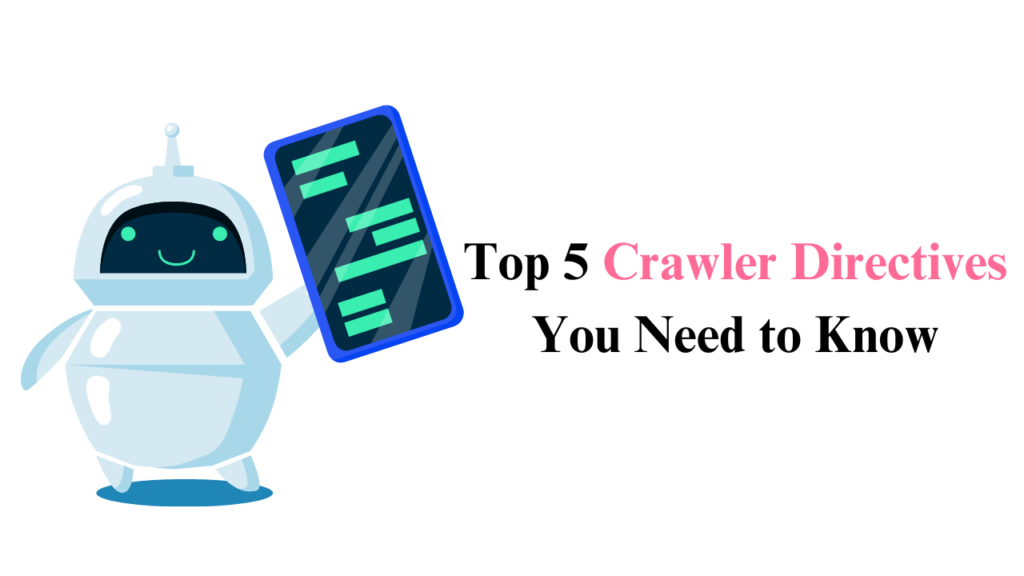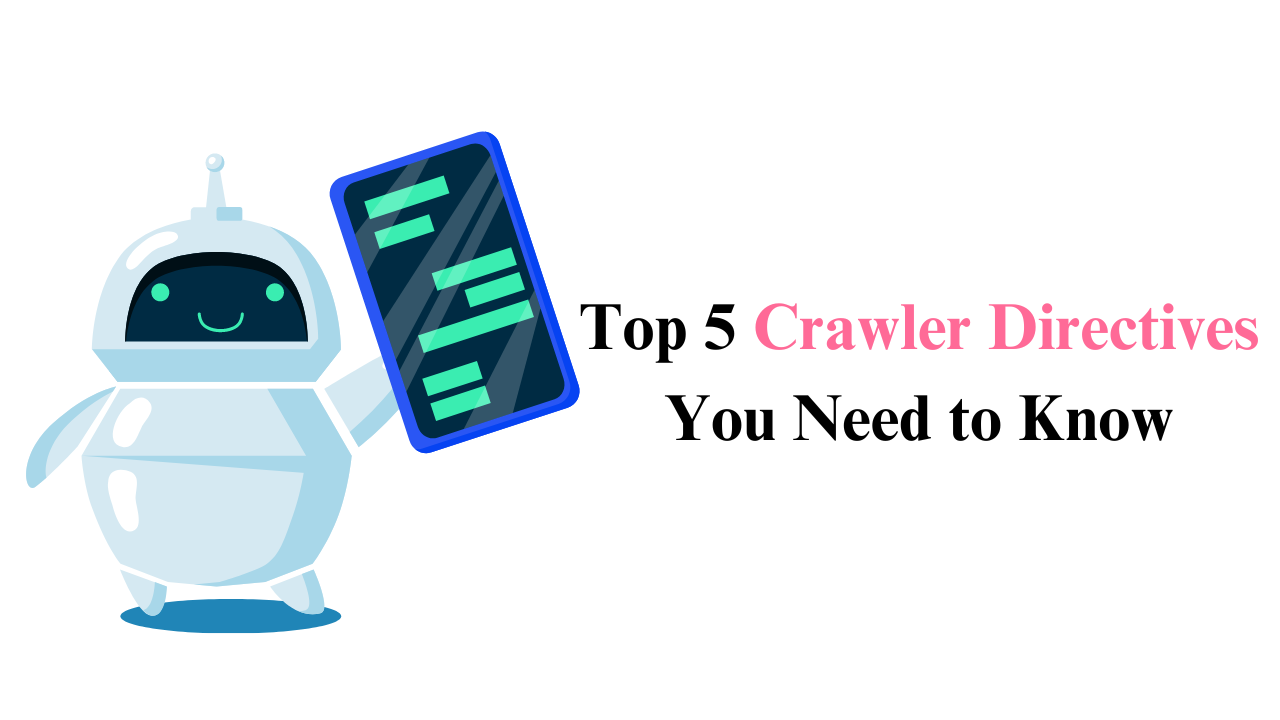
As the digital realm advances continuously, businesses from startups to large scale are competing to reach the goals. Companies are trying various digital marketing strategies to attract target audiences to stay ahead in the future.
No matter whether you are a novice in the digital world, you might be aware of the role played by SEO in reaching your business into the target audiences.
Meeting the SEO aspects and optimizing your website and content based on the SEO requirements will help your business to gain online visibility and traffic organically.
In such cases, it has become significant to understand the parameters that search engines consider to rank your website.
It is essential to learn how search engines crawl or index your website or web pages. Have you ever heard about crawler directives or robot commands?
Read this blog to unleash the power of crawler directives or robot commands. You will also learn about the 5 types of crawler directives.
5 Crawler Directives You Need to Know
Table of Contents
What are Crawler Directives?
Crawler directives are the specific guidelines for search engines during indexing and crawling a website’s content. These are called robot commands that are interpreted in a file called robots.txt that is located in the website’s root directory.
Crawler directives can be considered a bridge between website owners and search engines to understand which part of the content has access.
Here are some benefits of crawler directives
Better User Experience
Crawler directives monitor the search engines that they should not crawl and index low-quality content. So, eventually, they are responsible for improvising the user experiences.
Enhanced Search Engine Rankings
With the help of some crawler directives such as Disallow, you can restrict the search engine crawl or index your pages to prevent users to view sensitive information.
Quick Indexation of Important Content
Using crawler directives such as A you can make your web pages easily visible to the audience by instructing search engine bots to access indexing and crawling.
Now that you know some benefits of the crawler directives, let’s dive into the types of it.
Suggested Reads: The Do’s and Don’ts for Successful SEO in Backlink Management in 2023
Top 5 Crawler Directives You Need to Know
1. Allow
As the name suggests, the ‘Allow’ directive instructs the search engine bots to give access to indexing and crawling the web pages. These crawler directives foster access to various URLs, sections, and files of the website.
It enables the webmaster to go through the crawlers of the search engine bots to specific areas of the pages or server to explore. This crawler directive is situated in the root directory.
The webmaster ensures the crawling of high-quality and optimized pages by directing the crawlers. It smoothens the crawling process without any hassles.
You can also use this directive when enabling crawling for a URL where the ‘disallow’ directive has blocked a specific section in the website and you want bots to crawl a specific portion from blocked content.
2. Disallow
This crawler directive is opposite to the ‘allow’ directives. This directive aids the search engine bots by setting which part of the web pages should be restricted from crawling and indexing.
It prevents using and wasting the crawl budget for low-quality content. Along with enabling webmasters to protect your sensitive content or data, it hides unnecessary content from the sight of users.
Practically, when a search engine bot undergoes a ‘disallow’ directive for a particular URL, it will avoid crawling and indexing on that section.
3. Crawl-Delay Directive
Crawl-delay is a crawler directive that plays a significant role in a website that gains enormous traffic from search engine crawlers.
Same way, it is also beneficial for the website to have limited server resources. This crawler directive instructs the search engine bots on how often they should crawl the website.
It describes the time delay within seconds that has been monitored from the requests from the search engine bots to the server.
4. Noindex Directive
During indexing, the search engines monitor and analyze the content on your web pages or sites and store it in the database resulting in the ranking of the pages in the SERP results.
But as the name says, the ‘Noindex’ directive restricts search engine bots from indexing specific pages to prevent pages from SERP results that are not fully developed.
This directive can be incorporated through the metatags in the HTML code of the web page easily. This metatag is included by the webmaster in the HTML header of the page, leading to restriction of indexing the content.
In simple words, when a search engine bot undergoes this meta tag, they skip the specific page from indexing.
This directive plays a beneficial role in resolving duplicate content issues and eliminating content or data with low quality.
You can also use this crawler directive as a quick action to temporarily hide a page from search engine rankings.
5. User-Agent Directive
Unlike other crawler directives, the user agent directive is selective about which web crawler shall have access to crawl the specific, sections of the website.
Through this directive, you can easily monitor and manage the behavior of the crawler and ensure that they are accessing the right content.
To implement the user-agent directive, you have to use a particular file called ‘robots.txt’ that should be located in the website’s root directory.
Do you know why this crawler directive is significant? Since this directive helps you to control the crawlers, you safeguard your privacy and sensitive data from dangerous and malicious bots.
Suggested Reads- 6 Types of Gated Content for Lead Generation in 2023
Learn about Crawler Directive to Optimize Your Website
You might be new to these insights, but it is essential to know the deeper version of search engines and the process for boosting the performance of the search engine.
Understanding these crawler directives, you will learn the route through which the search engine interacts and indexes your content.
It will also help you bring strategies and methods to optimize your website, which would result in increased visibility of your content.
Suggested reads- Top 5 Best SEO Companies for Small Business
If you are struggling to rank your website in the SERP and boost traffic, then you are at the right place. Linksprout.io provides personalized link-building and digital marketing services with a bunch of experienced and skilled professionals.
